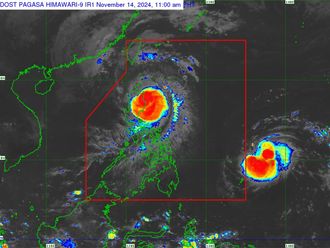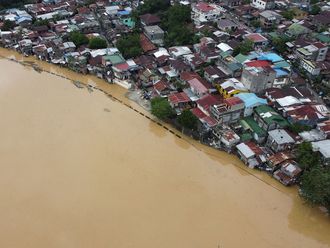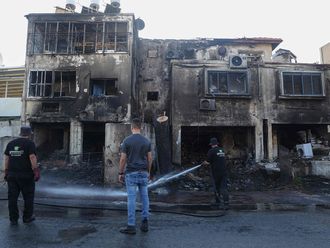Manila: A year after typhoon Ketsana left large areas of the capital under water, Metro Manila remains unprepared for a calamity of similar magnitude.
Ketsana, which has a local typhoon code name of ‘Ondoy' dumped record rainfall in metropolitan Manila on September 26, 2009, leaving some 300 people dead in its muddy wake.
The typhoon's fury offloaded an estimated 341.3 millimetres of rainfall within a six-hour period, leaving parts of the city several metres deep in flood water.
It nearly caused a humanitarian catastrophe as parts of the capital were under water for several months and there were difficulties encountered in getting aid supplies to marooned residents.
While the calamity served as a wake-up call for authorities, National Disaster Coordinating Council executive officer Benito Ramos said disaster preparations continued to be hamstrung by a lack of funds. This was despite donor agencies promising billions of pesos in aid.
Limitations
"Preparations will only be as good as their limitations," Ramos said in an NDCC statement posted yesterday, the eve of the tragedy's first anniversary.
"Limited funds, on the other hand, have delayed the relocation of affected families. Thus, there are still disaster risk-reduction and management activities which the Filipino people can carry out to be out of harm's way."
Ramos said the only things Filipinos could hold on to in such times of disaster were their own resilience and ability to overcome great odds, and the lessons learned from the tragedy.
"Filipinos are known to be strong and resilient, and must move forward, rebuild and seriously consider the lessons learned from what happened," he said.
"Tragedies choose no one — poor or rich, educated or not, young or old. But these tragedies teach us lessons that we should not take for granted."
For its part, the palace said the government was taking whatever measures it could with the resources at its disposal to prevent a similar tragedy from taking place in the future.
But while the air is filled with authorities talking about disaster mitigation measures, everyone seems to be leaving out the question of how the catastrophe happened in the first place.
Fundamental concerns were yet to be addressed,
Years of unbridled urbanisation — government and private infrastructure development — had clogged the waterways where once rainwater could escape and prevent flooding.
Many feared that at the heart of such development were those who may have bribed public officials to allow the waterways to be built upon.












